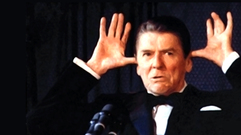 An oxymoron is a turn of phrase where you put two contradictory terms together, either on accident or to make a point. The most famous oxymoron in the United States is "congressional intelligence." Oxymorons can also become cliches such as "bittersweet" or "deafening silence."
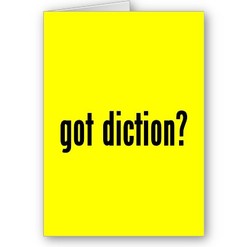 Diction is one of Ms. Fassbender's very favorite literary devices. Diction can be defined essentially as word choice. The effects of this word choice, if there are any, are what diction is measured in. For instance, carefully chosen, descriptive words can lend mood to a scary story, or humor to a comedy. Diction can also give you implied information on the background of a character or the setting, especially through dialogue. I typically have a difficult time identifying diction unless told to look for it specifically. The way I see it, if diction is word choice, then the entirety of whatever I am reading has had its words chosen carefully. Therefore, every character on every page is diction, which makes its isolation irrelevant, obsolete, and superflous
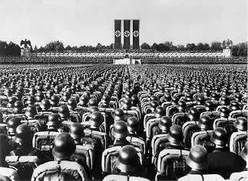 Hubris is a case of excessive pride that goes horribly wrong. It has a very negative connotation, and is only really applied to the past. An example of hubris would be the German offensive into the Soviet Union in WWII despite a cease-fire pact with them. Hitler thought that his mighty army, which had been so successful so far, could easily conquer the U.S.S.R. before the winter arrived. Hitler's pride in his army was excessive though, and the German Army became embroiled in bitter winter fighting, the worst of which occurred in the city of Stalingrad on the river Volga. The Germans lost millions of troops attacking Russia and their momentum. Most people agree that Hitler's hubris in this instance lost him the war.
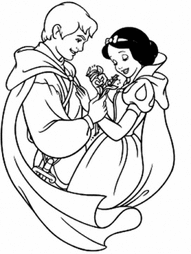 An archetype is an example of something upon which all subsequent models are based. The word "archetypal" can also be used to describe a perfect example of something. For instance, Disney regularly employs the archetypal "Prince and Princess" storyline, with a damsel in distress and a dashing prince to save her. Archetypes also have a place in Psychology, thanks to the theories of Carl Jung. Jung noticed the similarities in the folklore of people across the globe, even though many of the cultures he looked at developed in isolation. He took this to be the manifestation of collective "ancestral memories" that the human race shares. Examples of Jungian archetypes are things such as "the hero," "the maiden," "the old man," and "the father."
 Metonymy is the state of being for a word where it becomes synonymous to another word that is very closely related to it. A classic example is of "Hollywood" being synonymous to the American movie industry. "The Press" and "The Crown" are also good examples, standing for reporters and monarchs respectively. This is a very subconscious literary element, as its use requires an unconscious and intimate relationship between to things. This makes metonymy ideal for annotation, since you can practice identifying metonyms there.
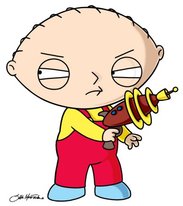 Characterization is a literary element that I often overlook, since it is so prevalent in the majority of writing. It is essentially anything that is in the text or implied by the text that furthers your understanding of a character. This could include background information, a thought, an action, a perception of the character's, a perception of the character itself, and more. Although I often miss characterization as a standalone element, you cannot fail to notice its effects. Without characterization we would all be reading only phone books and science textbooks.
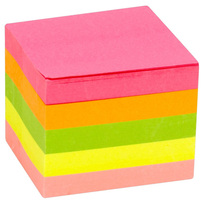 Annotations are a method of meta-cognition used while reading. You start the process by getting a pen and writing in your book, or if you don't own the book you're reading, you get a giant stack of sticky notes and write on those. Then, throughout the book, you write about your feelings towards and what you see in the book. They are very good practice for identifying literary elements such as diction, symbolism, and theme within a text. In AP English, we use them extensively, annotating whole books at a time.
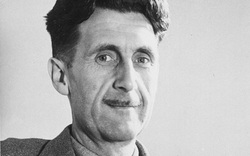 George Orwell was a celebrated English author in the mid 20th century. I have read two books by him in AP English 12 already, 1984, and Animal Farm. He is a very interesting author, being highly critical of communism, enraged by fascism, and yet a huge supporter of democratic socialism. His books often take on world events from an allegorical standpoint, in the case of Animal Farm it is a flat out fable. He also employs similar plot points consistently, totalitarian states, three warring provinces that shift alliances constantly, and a sympathetic victim. Orwell is one of the most influential authors of his time.
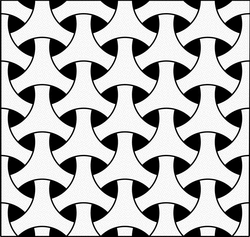 A motif is anything that is repeated throughout a narrative. Often it is a phrase or an object, but it can be anything really. They are effective in repeating a point, or reminding readers of a plot point, and can carry heavy symbolic value. The difference between a theme and a motif is that a theme is a thought that is supported by a story, where a motif is a repeated piece of a story supporting a thought.
 I think that the chess piece in "The Count of Monte Cristo" was a powerful symbol. At first it was set up as a mutual keepsake that represented the friendship between Fernand and Edmund. Then after the betrayal of Fernand, he gives the piece back to Edmund to "remember better days." At the end of the movie, after Fernand's life has been taken away to sate Edmund's lust for revenge, Fernand looks into chests he expects to be filled with gold and instead finds only the chess piece. This is very powerful, not only has Edmund revealed his identity this way, he has also renounced their friendship. In addition, by putting it in the chests that were filled with the gold that Fernand thought he had successfully stolen, he illustrates symbolically his disappointment with Fernand for selling out their friendship (the chess piece) for empty material wealth (the chests).
|










 RSS Feed
RSS Feed